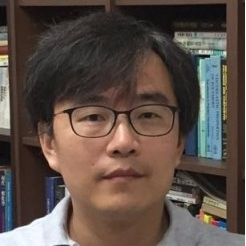Advanced Nanomaterials for Electrochemical Energy Storage and Conversion Applications
A special issue of Nanomaterials (ISSN 2079-4991). This special issue belongs to the section "Energy and Catalysis".
Deadline for manuscript submissions: closed (31 May 2023) | Viewed by 21003
Special Issue Editor
Interests: electrochemical energy storage and conversion system; energy nanomaterials; nanocarbons and carbon fibers; functional nanofibers; supercapacitors; electrocatalysts; metal nanoparticles; biosensors; fuel cells; layer-by-layer self-assembled thin films and capsules; nanostructured molecular nanocomposites; hydrogels; hybrid POSS materials
Special Issues, Collections and Topics in MDPI journals
Special Issue Information
Dear Colleagues,
Advanced nanomaterials are the core of electrochemical energy storage and conversion devices since the quantity of energy stored by the system and the power depend on them. Today, nanostructured, 2D/3D nano-architectured, nanoporous electrodes are producing spectacular results. Designing the electrodes interface for energy storage via the adjustment of specific properties in terms of conductivity, controlled pore size and porosity, surface modification, etc., is an important research area to prepare supercapacitor as well as battery electrodes with intensified properties, which contributes to the development of next-generation electrochemical energy storage and conversion devices.
This Special Issue is open for all contributions in the field of advanced nanomaterials-based electrochemical energy storage and conversion devices. The focus of this Issue is to highlight the state of knowledge in processing, manufacturing, characterization, and potential applications for advanced nanomaterials.
Prof. Dr. Byoung-Suhk Kim
Guest Editor
Manuscript Submission Information
Manuscripts should be submitted online at www.mdpi.com by registering and logging in to this website. Once you are registered, click here to go to the submission form. Manuscripts can be submitted until the deadline. All submissions that pass pre-check are peer-reviewed. Accepted papers will be published continuously in the journal (as soon as accepted) and will be listed together on the special issue website. Research articles, review articles as well as short communications are invited. For planned papers, a title and short abstract (about 100 words) can be sent to the Editorial Office for announcement on this website.
Submitted manuscripts should not have been published previously, nor be under consideration for publication elsewhere (except conference proceedings papers). All manuscripts are thoroughly refereed through a single-blind peer-review process. A guide for authors and other relevant information for submission of manuscripts is available on the Instructions for Authors page. Nanomaterials is an international peer-reviewed open access semimonthly journal published by MDPI.
Please visit the Instructions for Authors page before submitting a manuscript. The Article Processing Charge (APC) for publication in this open access journal is 2900 CHF (Swiss Francs). Submitted papers should be well formatted and use good English. Authors may use MDPI's English editing service prior to publication or during author revisions.
Keywords
- Nanostructured materials
- Nanoporous materials
- Advanced electrode nanomaterials
- Synthesis, characterization, modification, and devices
- Energy storage and conversion
- Electrochemical properties.






